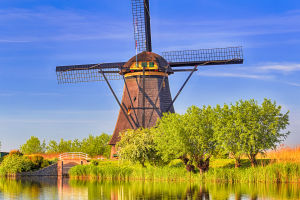Wind turbines are often hailed as a cornerstone of renewable energy, celebrated for generating electricity without relying on fossil fuels and for their zero carbon emissions during operation.
However, the environmental impact of wind turbines is more intricate and far-reaching than the initial perception of them being purely eco-friendly might suggest.
The true environmental footprint of wind turbines spans from their manufacturing processes to their end-of-life disposal, with several overlooked aspects contributing to their overall impact.
Manufacturing wind turbines is a resource-intensive process with significant environmental implications. The primary components of wind turbines include the tower, nacelle, and blades.
The blades, typically made from composite materials, such as glass or carbon fibers combined with resin, are particularly problematic. The production of these materials involves high temperatures and pressures, resulting in substantial carbon dioxide emissions.
These composite materials are integral to the blades' durability and functionality, but their production is energy-intensive and contributes significantly to greenhouse gas emissions. The manufacturing process also requires large amounts of metals and rare minerals.
For instance, the towers are predominantly made from steel, a material with a considerable carbon footprint. Steel production involves substantial energy consumption and results in significant air and water pollution.
In addition to the direct emissions from manufacturing, the extraction and processing of raw materials for wind turbines also have notable environmental impacts. Mining operations for the metals and minerals used in wind turbine components can lead to land degradation, habitat destruction, and water pollution.
These processes disrupt local ecosystems and contribute to broader environmental issues such as soil erosion and contamination of natural resources.
Once operational, wind turbines continue to impact the environment in ways that are not immediately apparent. Although they do not produce greenhouse gases during operation, the noise generated by the spinning blades and the shadow flicker effect can disturb local wildlife and human communities.
The sound produced by wind turbines can be a nuisance to nearby residents, potentially affecting their quality of life. More critically, the noise and shadow effects can interfere with the behavior of wildlife.
Birds and bats are particularly vulnerable, as they may suffer from collisions with the turbine blades or experience disruptions in their migratory patterns and breeding habits. Studies have indicated that some species may alter their migration routes or face increased mortality rates as a result of proximity to wind farms.
The construction and maintenance of wind turbines add another layer of environmental impact. Wind turbines are typically installed in large, open areas that require significant land development.
This development often involves clearing vegetation and modifying the landscape, which can lead to habitat loss and changes in local ecosystems.
The need for access roads and infrastructure to support the construction and maintenance of wind turbines further contributes to land use changes and potential ecological disturbances.
In remote areas, the transportation of materials and machinery can exacerbate environmental issues such as soil compaction, water runoff, and pollution.
Maintenance activities also have environmental implications. Regular upkeep of wind turbines involves the use of heavy machinery and frequent transportation, both of which can disturb local ecosystems.
The movement of large equipment can cause soil erosion and affect water quality, while the maintenance process may introduce pollutants if not managed properly.
A particularly challenging aspect of wind turbines' environmental impact is related to their end-of-life phase. Wind turbines typically have a lifespan of 20 to 25 years, after which they need to be decommissioned.
The recycling of wind turbine components, especially the blades, poses significant difficulties. The composite materials used in the blades are complex and not easily recyclable with current technologies.
As a result, many blades end up in landfills, contributing to waste accumulation. Efforts to improve recycling methods are ongoing, but the sector still faces substantial technical and economic hurdles in effectively managing the end-of-life phase of wind turbines.
while wind turbines represent a significant advancement in reducing greenhouse gas emissions and decreasing dependence on fossil fuels, their environmental impact is multifaceted and cannot be overlooked.
To fully understand the sustainability of wind energy, it is essential to consider the entire lifecycle of wind turbines and address these various environmental impacts. By doing so, we can work towards optimizing wind power technology and its implementation to ensure it contributes to a truly sustainable energy future.


